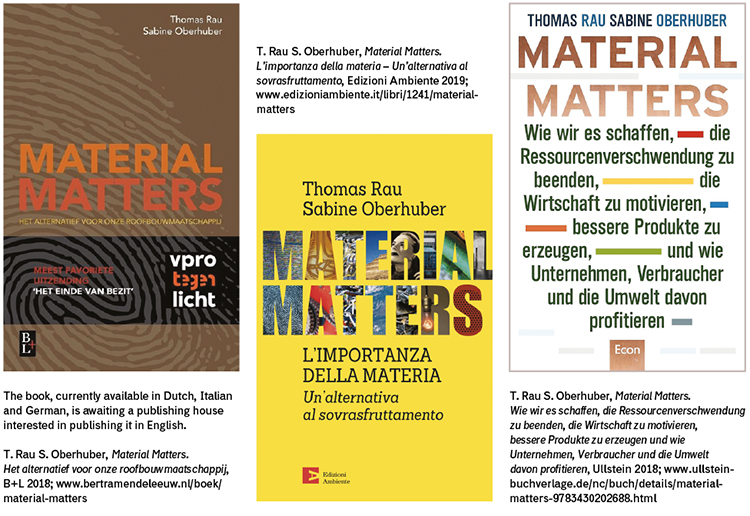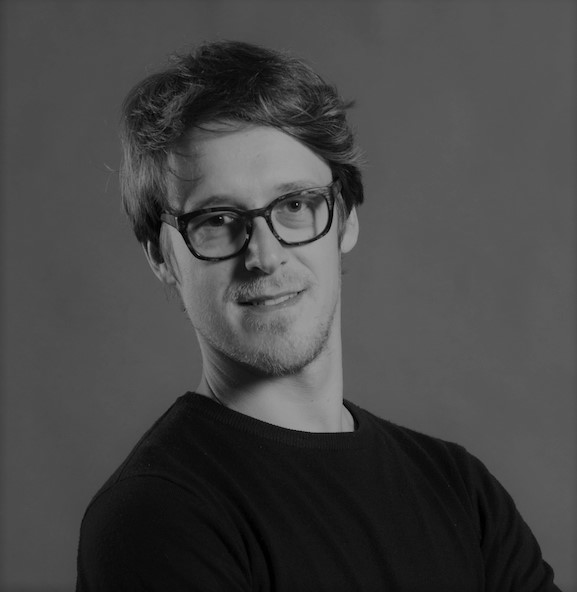Material Matters, The Importance of Matter – An alternative to Overexploitation by Thomas Rau and Sabine Oberhuber offers a critical and thoughtful perspective on how to take advantage of raw materials, in a historical moment when this kind of reflection needs promoting.
The book publication coincided roughly with the 70th anniversary of the Universal Declaration of Human Rights, an occasion that the authors used, metaphorically, to present to the UN the Universal Declaration of Material Rights (UDMR) – included in the book’s appendix – accompanied by the following message, “Earth is the only rightful owner of all raw materials and all matter and there is only one ‘permanent member’ who has a real right of veto: Nature.” Thus, Material Matters becomes a book which goes hand and hand with the Declaration, explaining its genesis and describing its founding pillars, but also promoting debate and making an interesting contribution to the technical-scientific debate.

The authors are very critical when it comes to distinguishing between real innovation and a mere status quo improvement. The application of the reduce-reuse-recycle mantra is strict and consistent.
The authors think that the linear economy, “organised in such a way that nobody is held accountable for the consequences of their actions,” is hard to overcome because it is still not understood. Paraphrasing Kelvin, “You cannot improve what you do not know, you cannot know what you cannot measure.” Not knowing the system’s limits, the absence of data, and the specialisation approach that tends to lose sight of the whole are the barriers to rediscovering the circular economy.
The separation between “power” and “responsibility” is identified as the genesis of the current model. “Consumers are expected to deal with too much: there is no way they can take upon themselves the responsibility to solve such problems, therefore the consequences of manufacturers’ decisions are always collectivised as waste.” Since consumers have no idea about the chain that led to the production of the item they are using, they feel relieved of responsibility and helpless when faced with problems caused by an economic and production model where they are just the last link in the chain.
The Turntoo Model, developed by the authors and presented in the book through theoretical discussion and numerous concrete examples such as LAAS (Light as a Service by Philips) or AAAS (Appliance As a Service by Bosch) intends to offer an answer to this problem. It develops the concept of “product as a service,” debated for decades and a pillar of the circular economy, offering a possible answer to the question: what happens when a manufacturer no longer intends to use the materials making up the basis of its services? The answer to this question draws inspiration from an interesting reflection on the identity of waste. What is waste if not anonymous material?
It has been observed that we keep track of what we consider “precious” and forget what we deem “valueless.” As a matter of fact, identity is more than the sum of its characteristics, it suggests the idea that it is something that must not be lost and must be protected. How can we organise and set up a document for material identity?
Identity management would require keeping track of how the identity bearer evolves and changes.
The study of such evolution would create awareness which in turn could lead to a real improvement of processes. Thus, a building to be demolished and hence valueless would become a temporary depot of materials, in this way we could reward manufacturers who create objects meant to last (and not to break down), to be updated (instead of becoming obsolete) and to become an icon instead of going out of fashion.
With identity re-appropriation we can resume talk about rights, the Universal Declaration of Material Rights and its analogies with the Universal Declaration of Human Rights. If we accept treating materials as we would like to be treated ourselves, we would come to a radical conclusion: no-one can appropriate for themselves materials provided by our closed system. In the linear production chain, capital is built into materials, this leads to speculation on raw materials and thus damaging nature. To avoid all this, Earth itself must be recognised with the right to sovereignty, this does not mean that human beings cannot use its resources, but rather have the power to manage them responsibly. Managing has nothing to do with ownership, it is about taking responsibility. Taking care and not possessing. In the Turntoo Model, where contracts are based on the product-as-a-service concept, equipped with an identity, we go back to the “prudent man” rule.
Identity and responsibility, the former becomes the expression of scientific and mechanistic logics and thought; the latter, the representation of a holistic, ethical and philosophical approach. They must work as one and in synergy find a swift and effective solution to environmental problems caused by the linear economy. To change our relationship with our planet we need both a new economic system and a cultural shift. If we really want to improve our relationship with Earth, we must change the soul of our economy and society.
More and more often, in specialised essays, and this book is no exception, we find a combination of quantitative thought (guided by linear thinking) and qualitative thought, linked to timeliness and the ethical aspect of our choices, characteristic of systemic thinking. The book offers both technical solutions and ethical and systemic arguments with a way of reasoning that uses the best of both worlds.
Part of our planet has already taken an evolutionary step, we can see it in classical mechanics now enriched and improved by quantum mechanics, in design finding new blood in biomimicry, in sciences which through biophilia enrich their emotional component, in industry shyly starting to apply the product-as-a-service concepts, and in architecture seeing buildings as material depots (Brummen Town Hall designed by Thomas Rau is the first building in the world to have an identity card for each material used).
Our society is experiencing a great acceleration phase, both destructive and constructive. Rau and Oberhuber’s contribution undoubtedly enrich the open debate on our future.



